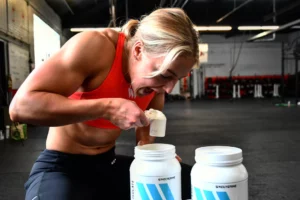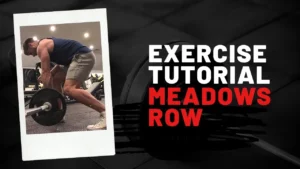The only foolproof method to tell if someone is on steroids or natty is to do a drugs test. But there are some signs, both in body mass, composition and ultimately the look of tissue as to whether someone is natty or not.
So to begin with, the purpose of this isn’t to out anyone, we’re just looking to cut through some of the nonsense you may see on social media as to people who claim to be natural but there’s no denying it, or those that are natural but just have insane genetics.
Now onto genetics, there are absolute genetic anomalies in bodybuilding. The likes of Kai Greene and Ronnie Coleman turned pro whilst still natural, but then packed on another 80lbs of lean tissue to reach an Olympian level physique, these are your outliers. The volume of tissue you can hold on your frame naturally varies significantly person to person as your bone structure, metabolic rate and fibre composition all play a very large part. But for the 99.9% of individuals, just by looking at them, their fat free body mass and the rate of “gain” past a certain point, you can tell those that are using anabolics.
So how can we tell scientifically if someone is natty or not?
I’m going to outline 3 different mathematical equations, discuss their merits, where they fall short and also then look at visible traits that are commonplace in those that do use steroids.
The 3 equations we’re going to look at are;
- The Berkham Model
- Casey Butt’s “Your Muscle Potential”
- Fat Free Mass Index – FFMI
Let’s start with The Berkham Model
The Berkham Model
The Berkham model outlines what the maximum body weight of an individual could be at a “shredded” or stage lean condition.
The equation is as follows;
(Height in centimetres – 98-102) = Body weight in kilos.
So let’s just outline a few heights and max perceived body weights.
- 5ft 8 = 70-74kg
- 5ft 10 = 76-80kg
- 6ft = 81-86kg
- 6ft 2 = 86-90kg
The positives of this model are its simplicity, it takes literally 30 seconds to do the calculation and find a ballpark figure of how much muscle you could potentially look to gain naturally.
It’s limitations are that it doesn’t take into account things like bone structure and I would also say that the estimation is a little on the low side of the genetic potential for most individuals.
Casey Butt’s “Your Muscle Potential”
Casey Butt’s model takes this a little further, he includes a wrist and ankle measurement into the max body weight calculation to take into account bone structure, but also provides formulas to predict maximum muscular measurements and a formula to predict your max total bodyweight at different body fat levels.
The maximum lean body mass formula is as follows;

H= height in inches
A = ankle circumference at the smallest point
W = wrist circumference at the smallest point
%bf = body fat % at which you want to predict max lean body mass
Here’s a calculator for you to run the formula for yourself; http://fastfoodmacros.com/maximum-muscular-potential-calculator.asp#casey
This model for me is a little more likely because it actually takes into account bone structure, i.e. if you have a narrow bone structure you’ll be able to carry less tissue and vice versa.
Fat Free Mass Index – FFMI
Now the Fat Free Mass Index or FFMI is intriguing, because it creates a range for any height, weight and body fat % and determines on a scope from never lifted weights to absolute certainty of steroid use on a broad spectrum.
This is arguably the most commonly used form of most Youtubers that produce natty or not videos to ascertain whether someone is natural or not but again there can be outliers.
The FFMI calculated as follows;
(fat-free body mass in kg) x (height in meters)-2
Fat Free Mass Index Interpretation
16 – 17: below average
18 – 19: average
20 – 21: above average
22: excellent
23 – 25: superior
26 – 27: scores considered suspicious but still attainable naturally
28 – 30: highly unlikely scores to be obtained naturally without steroid usage
What is interesting here is if you run a comparison with the Berkham Model, you get the following;
- 73cm (5’8), 75kg (165lbs) @5% = 71.25kg lean mass = 23.8 FFMI
- 178cm (5’10), 80kg (176lbs) @5% = 76kg lean mass = 24.0 FFMI
- 183cm (6’0), 85kg (187lbs) @5% = 80.75kg lean mass = 24.1 FFMI
- 188cm (6’2), ~90kg (198lbs) @5% = 85.5kg lean mass = 24.2 FFMI
This shows as I thought, that the Berkham Model slightly lowballs natural potential.
Again as with any model, there will be outliers with a 26+ FFMI whom are natural, but on the most part, it can be taken as good guidance.
Take the current Mr Olympia for example Brandon Curry, on stage he weighs 240lbs and is 5ft 7 tall. Let’s estimate as a top level Olympian he’ll be sub 5% bf. This gives him an FFMI of over 36!! Clearly as a top level Olympian, you’re running a lot of gear, but you can clearly see that’s very far over the natural limit for his structure.
We’ll also take the Mr Olympia for the classic physique division, Chris Bumstead. He’s 6ft tall, weighs 230lbs on stage and let’s also for the sake of argument give him a 4% bf. This would have an FFMI of 30, again well over that 25 top end.
It’s not an exact science but gives you pretty good guidance.
Physical attributes of steroid users
Now a lot of people think they can tell if someone is using anabolics just by looking at them, this may or may not be the case. Of course at the extreme level there are telltale signs, but I guarantee you’ll encounter people that take steroids on a daily basis and you wouldn’t have a clue unless they told you.
There are however some common side effects and muscular adaptations which unless someone is a genetic freak, are unlikely to be caused by anything other than AAS usage.
The common side effects you may see in someone using steroids are;
- Acne
- Gynecomastia
- Rapid Weight/Muscle Gain
But in terms of muscle belly growth, you’re likely to see the largest variance in places with a higher concentration of androgen receptors. Generally the clearest difference between users and non users of anabolics can be seen through the deltoids, traps, arms and chest where muscular density and a 3D look can be a pretty good giveaway.
However always take that with a caveat, someone may just have very good genetics in a certain body part and as with all of these methods, the only real way to know is if someone confesses to the use of steroids or you blood test them.
It is entirely possible that someone may be on steroids and you won’t think they are and those that you will think they are and are not, we all have totally different genetics, body types and structures but it’s still interesting to speculate from time to time!
Anyways, I hope you guys have found this informative, any questions either ask on the forum or publish a comment below.






